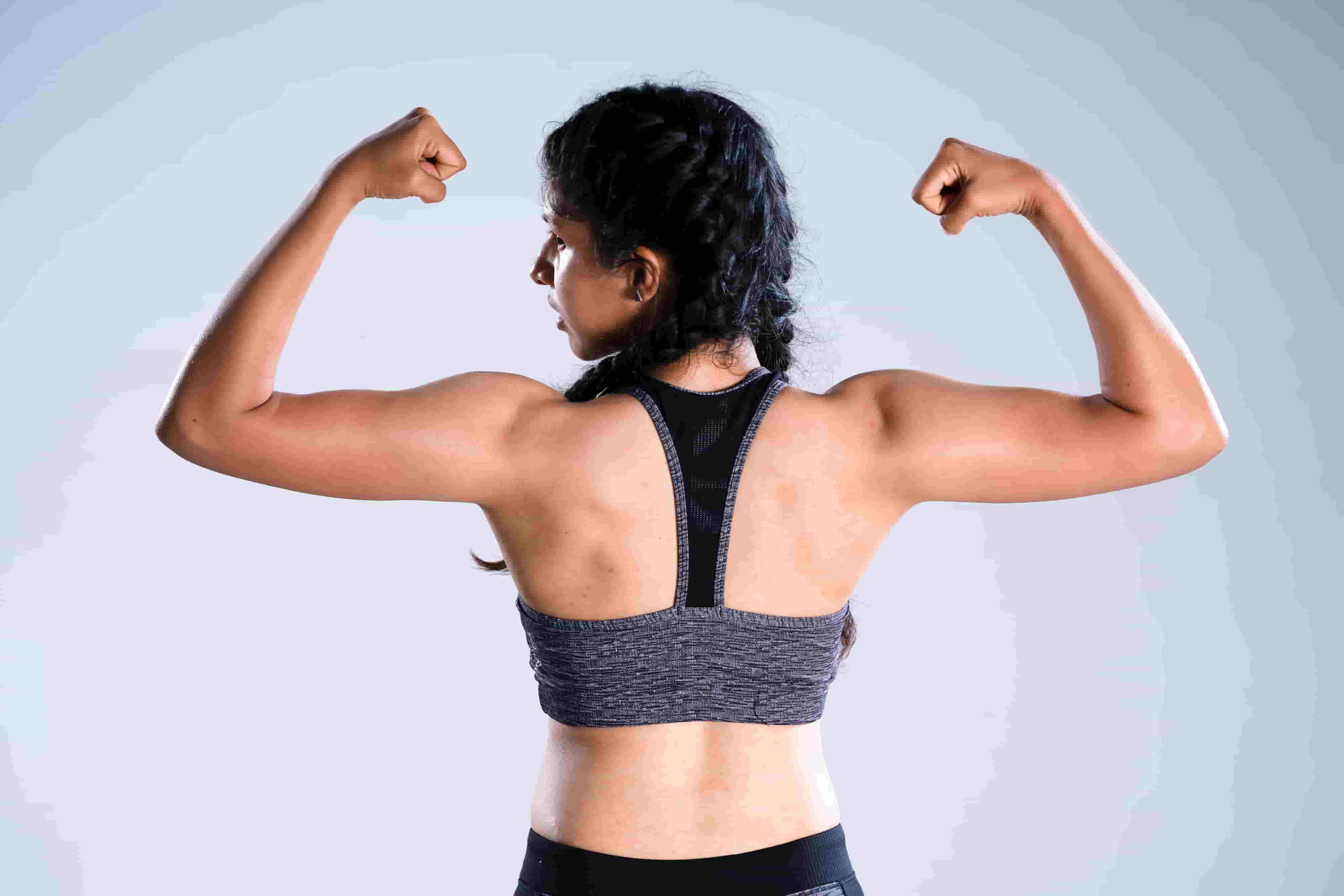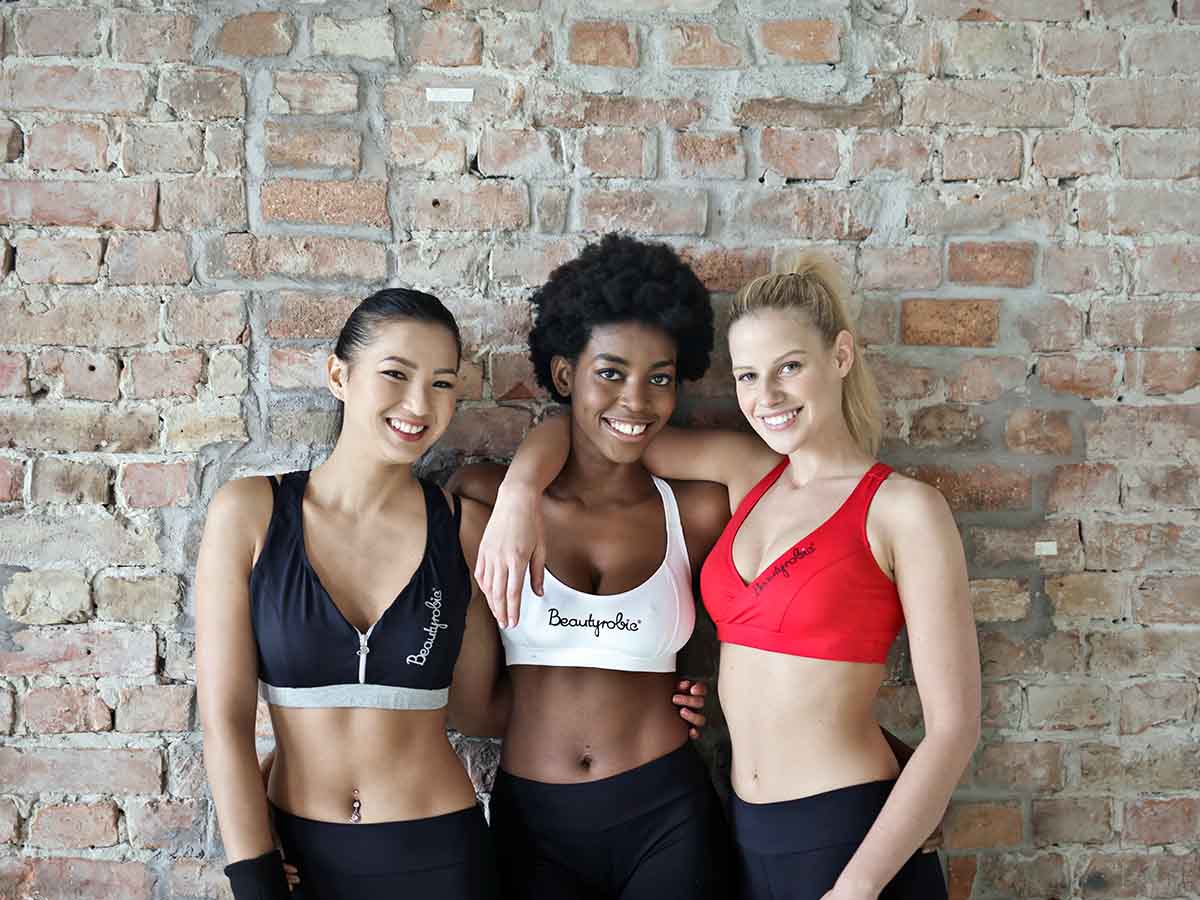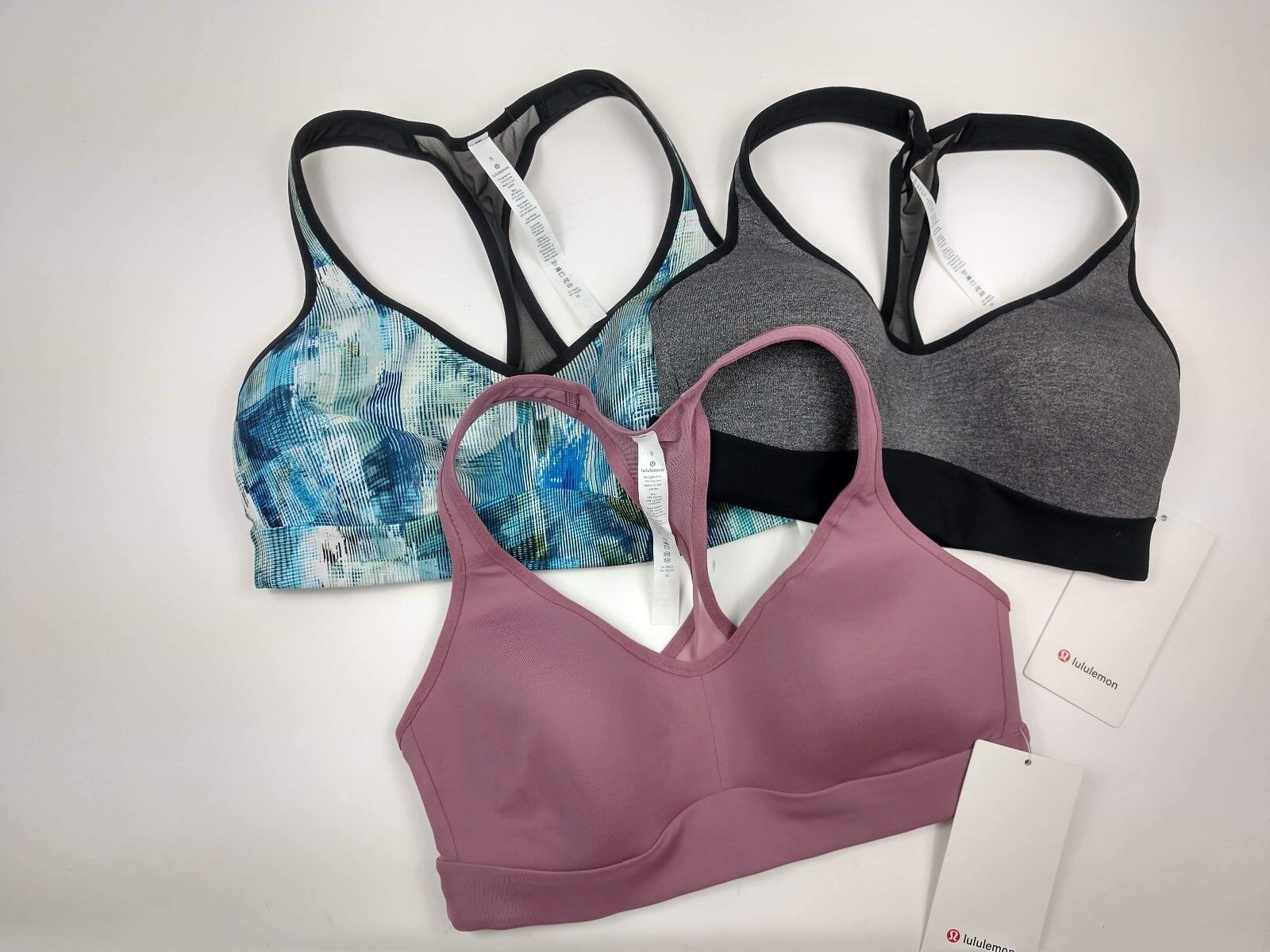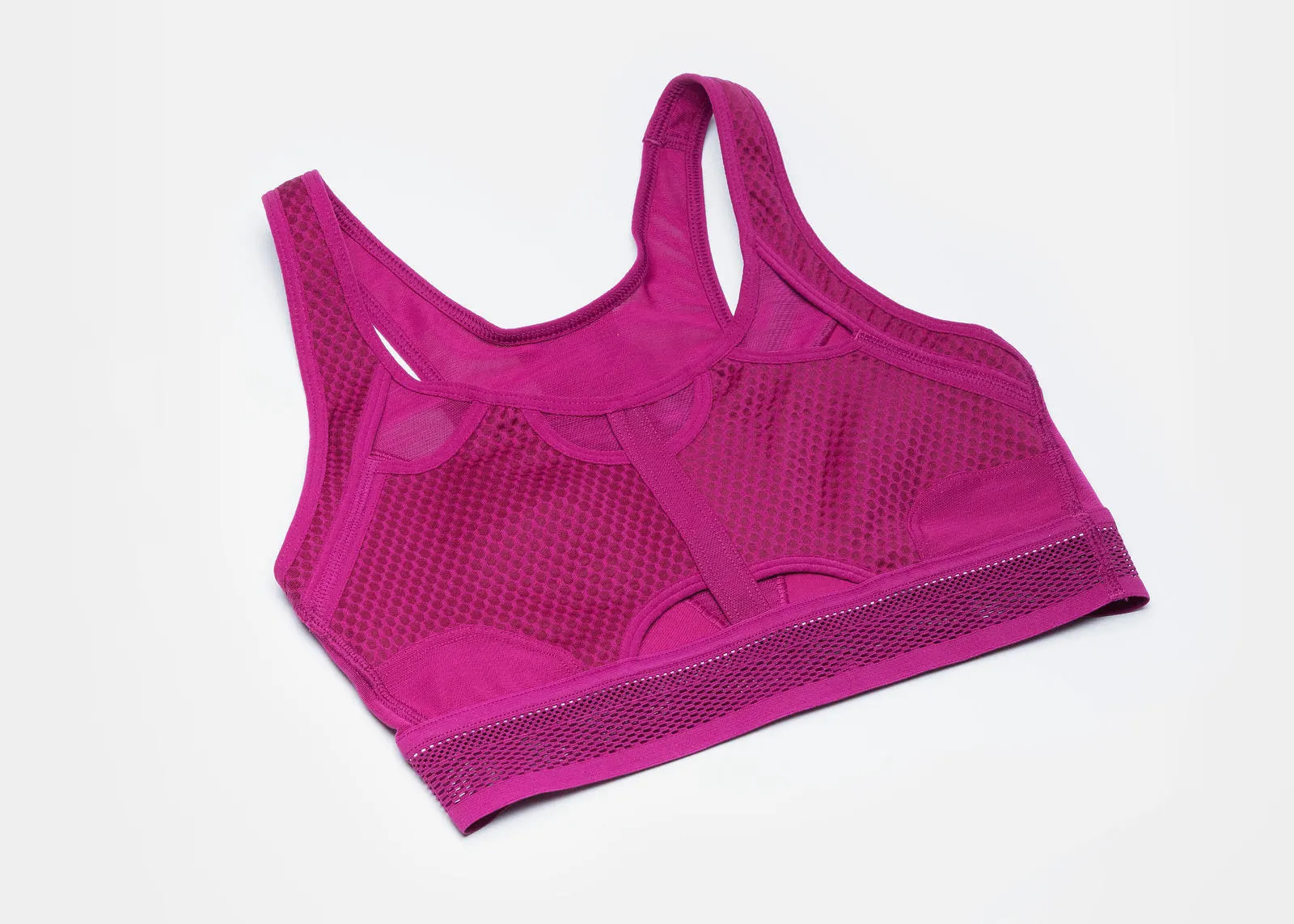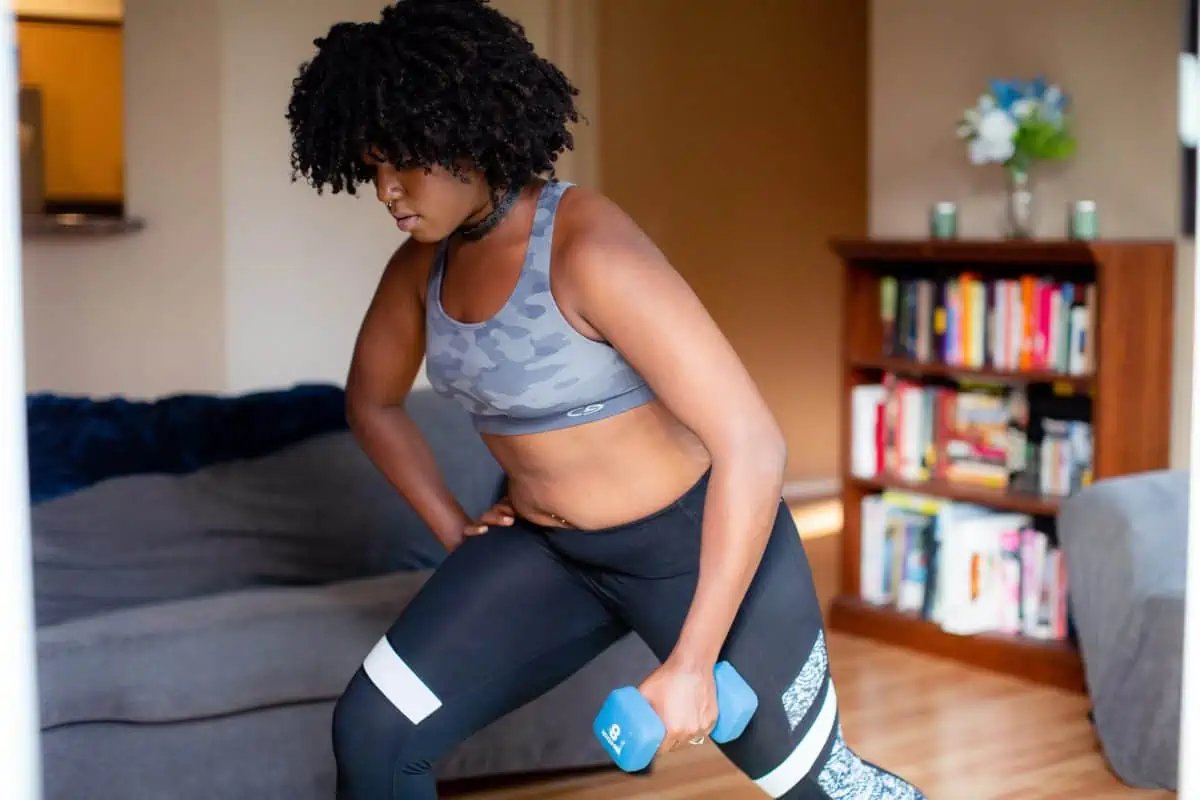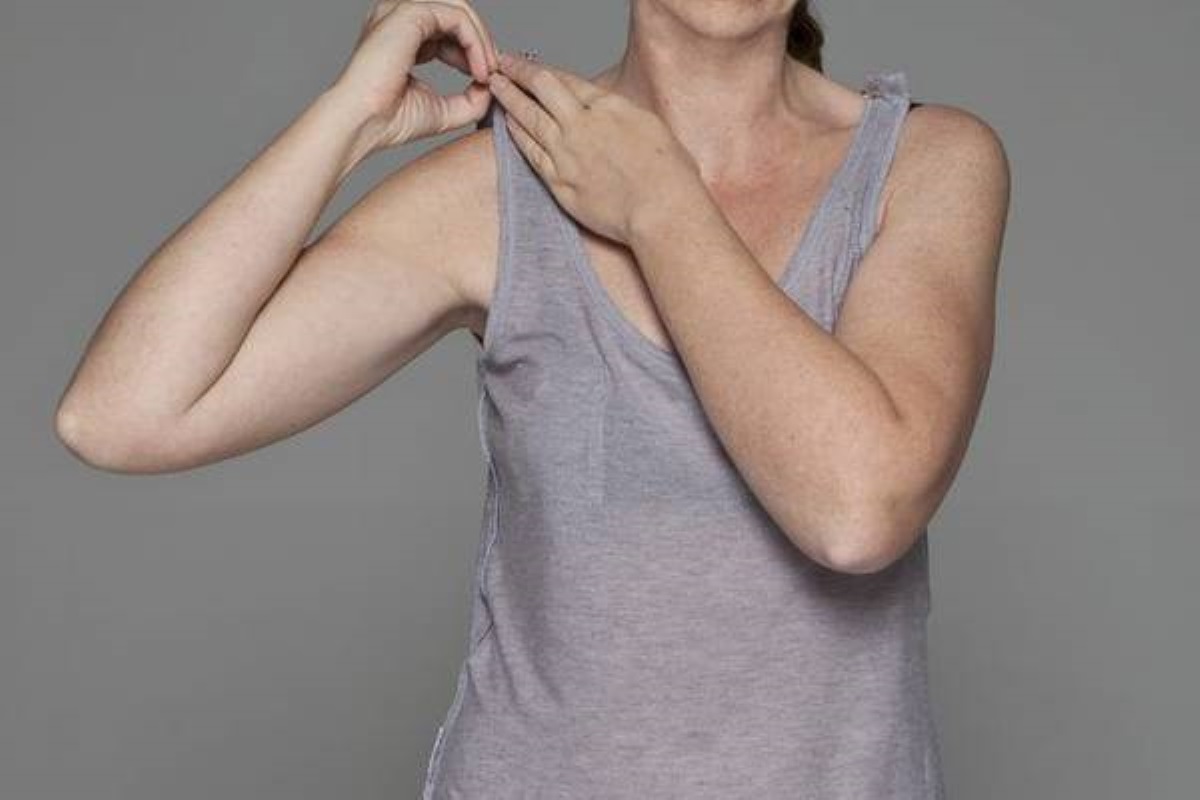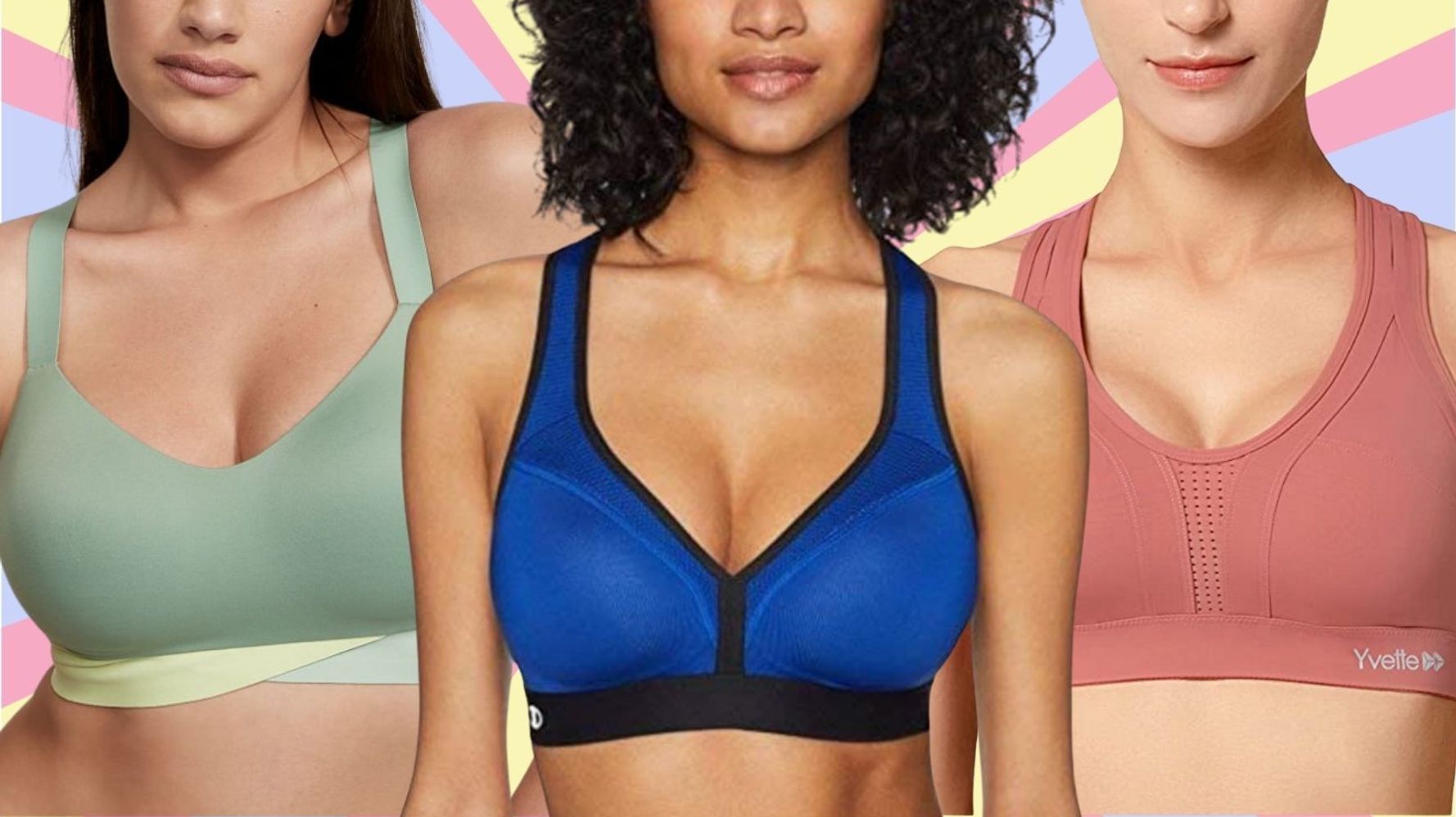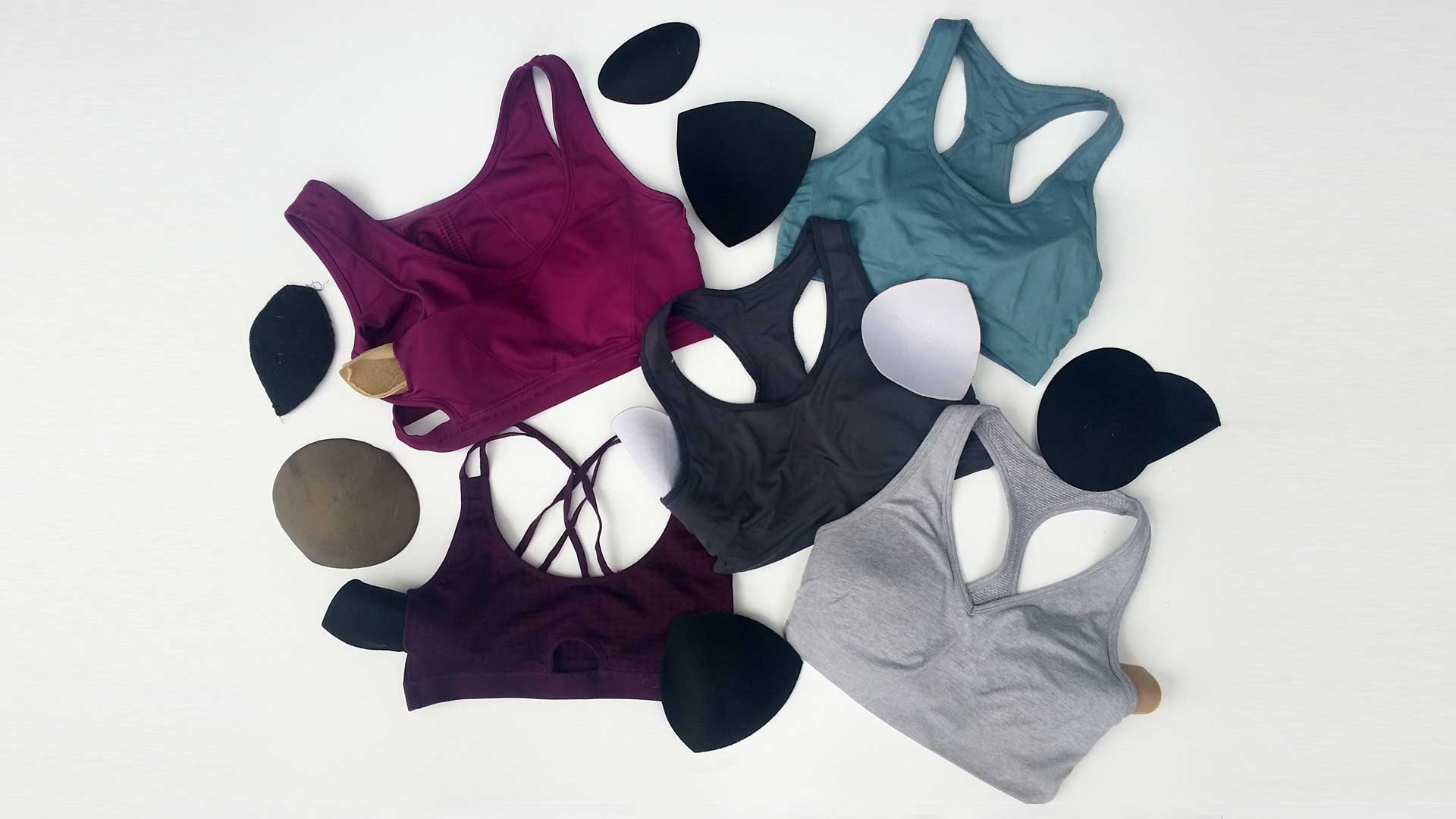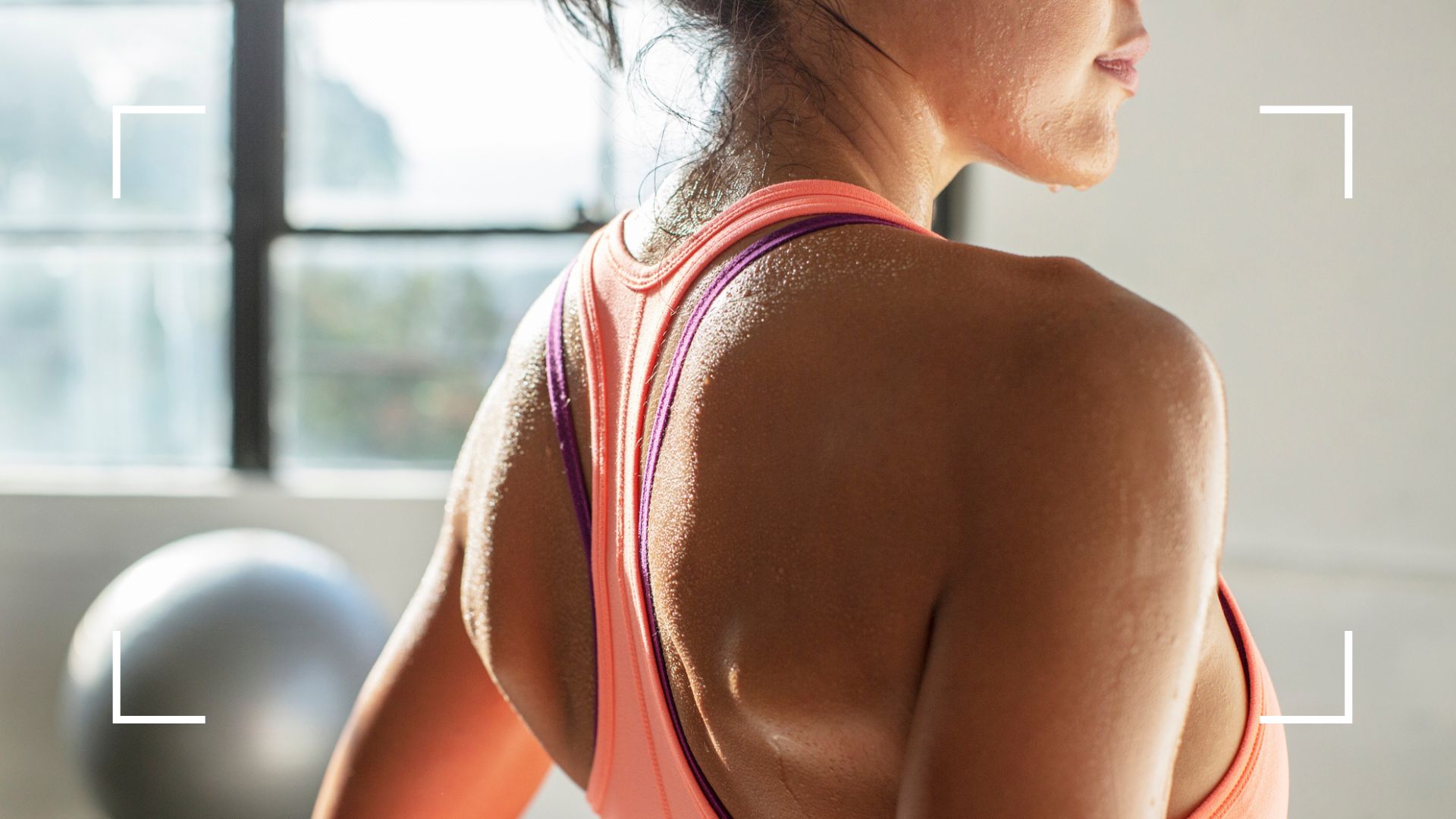Home>Women's Underwear>Bras>How To Tell If Sports Bra Is Too Small
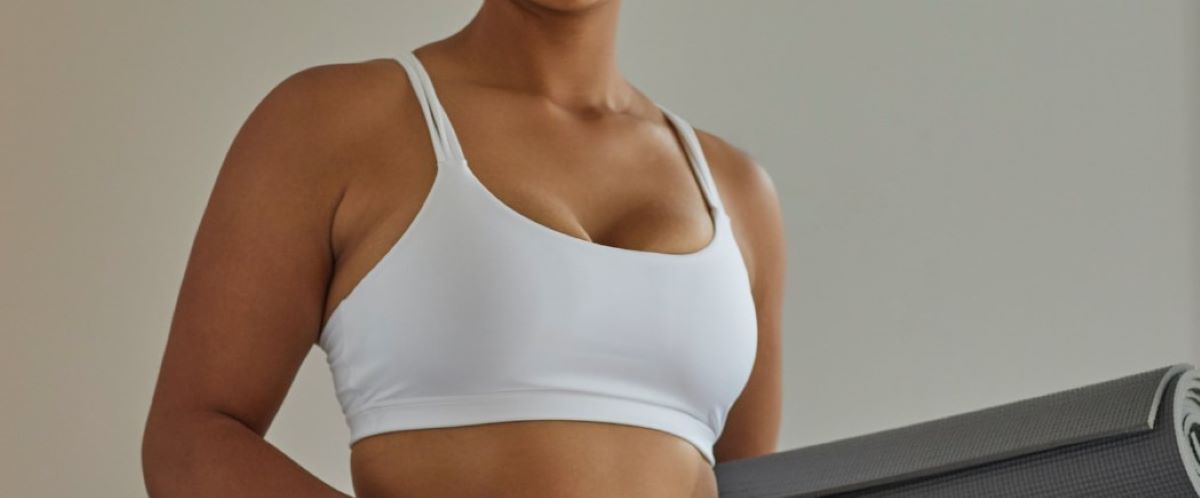

Bras
How To Tell If Sports Bra Is Too Small
Modified: August 26, 2023
Learn how to determine if your sports bra is too small and find the perfect fit. Discover the signs of a too tight sports bra and avoid discomfort during workouts.
(Many of the links in this article redirect to a specific reviewed product. Your purchase of these products through affiliate links helps to generate commission for Under-tec.com, at no extra cost. Learn more)
Table of Contents
Introduction
Sports bras are an essential component of any workout wardrobe, providing support and comfort during physical activities. However, finding the perfect fit can be a challenge. Wearing a sports bra that is too small can lead to discomfort, restricted movement, and even potential health issues. It is important to recognize the signs of a too small sports bra and understand how to measure your size accurately.
The importance of wearing a properly fitting sports bra cannot be overstated. It not only ensures comfort during exercise but also protects the delicate breast tissues from excessive movement, reducing the risk of sagging and damage to the ligaments. In fact, studies have shown that wearing an ill-fitting sports bra can lead to pain and breast tissue injuries.
So how can you tell if your sports bra is too small? There are several telltale signs to look out for. Pay attention to how the bra feels and fits on your body, and consider the following indicators to ensure you are getting the right size.
Importance of Proper Sports Bra Fit
Wearing a properly fitting sports bra is crucial for the overall comfort and well-being of active women. Whether you’re hitting the gym, going for a run, or participating in any other physical activity, a sports bra that fits correctly provides essential support and reduces the risk of discomfort and injury.
One of the main reasons why a proper fit is necessary is to minimize breast movement during exercise. The breasts are composed of delicate ligaments and tissues that can be easily strained or damaged when not adequately supported. Insufficient support can lead to pain, discomfort, and even long-term breast sagging.
A well-fitting sports bra can significantly reduce breast movement by providing compression and encapsulation. Compression bras press the breasts against the chest wall, minimizing bounce in all directions. Encapsulation bras have individual cups that separate and support each breast, offering maximum support and reducing vertical bounce.
In addition to preventing breast discomfort and injury, a sports bra that fits properly will also enhance your overall performance. When the breasts are well-supported, you’ll experience less distraction from discomfort, allowing you to focus on your workout. This can lead to increased confidence, better form, and improved athletic performance.
Moreover, a proper fit ensures that the straps and band of the sports bra stay in place during movement. If the straps are too tight or the band is too loose, the bra might shift or dig into the skin, causing irritation and chafing. On the other hand, if the straps are too loose or the band is too tight, the bra may not provide the necessary support, leading to discomfort and reduced performance.
Lastly, wearing a sports bra that fits well can boost your self-confidence. When you feel comfortable and supported, you can fully focus on your workout without worrying about any wardrobe malfunctions or discomfort. This can result in a more enjoyable exercise experience and motivate you to maintain an active lifestyle.
Signs of a Too Small Sports Bra
Recognizing the signs of a too small sports bra is essential for ensuring your comfort and performance during physical activities. Here are some indicators to look out for:
- Tight Straps: If the straps of your sports bra dig into your shoulders or leave red marks, it may be a sign that the bra is too small. Straps should provide support without causing discomfort.
- Digging or Chafing Under the Band: A too small sports bra can cause the band to dig into your skin, leading to irritation and chafing. The band should sit comfortably and snugly around your ribcage, providing support without feeling overly tight.
- Overflow or Spillage: If your breasts are spilling out of the cups or there is overflow around the edges, it is a clear indication that your sports bra is too small. The cups should fully encapsulate your breasts without any bulging or spillage.
- Lack of Support and Bounce: A sports bra that is too small may not offer adequate support, resulting in excessive bounce and movement during physical activities. If you experience significant breast movement while wearing a sports bra, it’s a sign that you need a larger size to ensure better support.
- Difficulty Breathing: If you find it challenging to take deep breaths or feel restricted in your chest area while wearing a sports bra, it is likely too small. A proper fitting sports bra should allow for easy and unrestricted breathing.
It’s important to pay attention to these signs and make adjustments accordingly to ensure you have the right size sports bra. A too small sports bra can not only cause discomfort and pain but also impact your performance during workouts. By investing in a properly fitting sports bra, you can enjoy the benefits of optimal support, comfort, and freedom of movement.
Tight Straps
One of the signs that your sports bra may be too small is when the straps dig into your shoulders, leaving uncomfortable red marks. Tight straps not only indicate a poor fit but can also lead to pain and restrict your range of motion during exercise.
Ideally, the straps of a sports bra should provide support without causing discomfort or leaving indentations on your skin. When trying on a sports bra, make sure the straps are adjustable so that you can customize the fit to your liking. Adjust the straps to a length that feels comfortable and secure, without digging into your shoulders.
If you find that no matter how much you adjust the straps, they still dig into your shoulders, it is a clear sign that the sports bra is too small for you. It’s important to take note of this and try a larger size to ensure a better fit.
A sports bra with properly fitting straps is crucial for distributing the weight of your breasts evenly, minimizing discomfort and strain on your shoulders. When the straps are too tight, they can cause unnecessary pressure and tension, leading to discomfort and even potential shoulder or neck pain.
Moreover, tight straps can limit your range of motion and prevent you from performing certain exercises or movements comfortably. Whether you’re lifting weights, running, or practicing yoga, having the freedom to move your arms and shoulders without restriction is essential for achieving optimal performance and preventing injury.
In addition to adjusting the straps, it’s also worth considering the design of the sports bra. Look for bras with wider straps as they tend to distribute the weight more evenly and provide better support. Avoid thin or flimsy straps, as they are more likely to dig in and cause discomfort.
Remember, the purpose of a sports bra is to support and protect your breasts during physical activities. If you notice that the straps of your sports bra are consistently too tight, it’s time to find a larger size that will provide the support and comfort you need.
Digging or Chafing Under the Band
Another sign that your sports bra may be too small is if you experience digging or chafing under the band. The band of a sports bra plays a crucial role in providing support and stability, and it should fit snugly around your ribcage without causing discomfort.
When a sports bra is too small, the band may dig into your skin, leaving red marks and possibly causing irritation or chafing. This can be particularly bothersome during high-impact activities such as running or jumping, where excessive friction can further exacerbate the issue.
To determine if the band is too small, pay attention to how it feels when you wear the sports bra. It should be firm enough to provide support and prevent excessive movement, but not so tight that it feels constricting or painful. Ideally, you should be able to slide two fingers underneath the band without difficulty.
If you notice that the band of your sports bra is digging into your skin or causing discomfort, it’s a clear indication that you need a larger size. Opting for a sports bra with a wider band or adjustable closure options can also help ensure a proper fit and minimize any potential digging or chafing.
It’s worth noting that the band of a sports bra should sit parallel to the ground and not ride up or fold over during activity. If you find that the band is constantly shifting or folding, it may be an indication that the bra is too small or that the elastic has lost its elasticity.
Proper support from the band is crucial for reducing breast movement and preventing strain on the delicate breast tissues. An ill-fitting band not only compromises the overall performance of the sports bra but can also lead to discomfort and potentially cause long-term damage to the ligaments.
Remember, a well-fitting sports bra should feel supportive and comfortable throughout your workout. If you experience digging or chafing under the band, it’s time to reevaluate the size of your sports bra and choose one that provides the optimal fit and support for your body.
Overflow or Spillage
One of the clear signs that your sports bra is too small is when you experience overflow or spillage from the cups. A properly fitting sports bra should fully encapsulate your breasts, providing support and preventing any bulging or spillage.
If you notice that your breasts are spilling out of the cups or there is overflow around the edges, it’s a strong indication that the bra is too small. This can be especially problematic during high-impact activities when excessive movement can cause discomfort and even potential injury.
When trying on a sports bra, pay attention to how your breasts are positioned within the cups. They should be fully encapsulated and supported without any excess flesh bulging out. The cups should provide a smooth and secure fit, holding your breasts in place while allowing for comfortable movement.
It’s important to note that the amount of overflow or spillage can vary depending on the type of sports bra and the activities you engage in. Different sports bra styles, such as compression or encapsulation, offer varying levels of support and coverage. However, regardless of the style, no sports bra should cause significant overflow or spillage.
Choose a sports bra with cups that are the appropriate size for your breasts, accommodating their full volume without compressing or squeezing them. Adjusting the straps and band can also help optimize the fit and prevent any overflow or spillage.
Overflow or spillage not only indicates an ill-fitting bra but can also lead to discomfort, inadequate support, and potential breast tissue damage. It’s crucial to choose a sports bra that provides the proper coverage and support for your breasts to ensure a comfortable and effective workout.
If you find that your current sports bra consistently causes overflow or spillage, it’s time to reassess your size and invest in a sports bra that provides the right fit and support. A properly fitting sports bra will enhance your comfort, performance, and overall workout experience.
Lack of Support and Bounce
One of the key indicators that your sports bra may be too small is a lack of support and excessive bounce during physical activities. A properly fitting sports bra should provide optimal support, minimizing breast movement and ensuring a comfortable workout experience.
When a sports bra is too small, it may not offer the level of support required for high-impact activities. As a result, you may experience excessive bounce, discomfort, and potential breast tissue damage over time.
During exercise, the breasts move in various directions, including up and down, side to side, and in and out. This movement, if not properly controlled, can lead to pain, discomfort, and sagging of the breasts. A well-fitting sports bra helps to reduce breast movement by providing compression and encapsulation.
If you find that your sports bra fails to adequately support your breasts, causing noticeable bounce and movement, it’s a clear indication that the bra is too small. Opting for a larger size can help ensure better support and minimize discomfort during physical activities.
In addition to inadequate support, an ill-fitting sports bra can also cause a sense of restriction or compression in the chest area, making it difficult to breathe properly. This can significantly impact your performance and overall workout experience, as proper oxygen flow is vital for energy and stamina.
When choosing a sports bra, look for features that enhance support and reduce bounce, such as wide underbands, adjustable straps, and encapsulated cups. The underband should sit firmly around your ribcage without feeling too tight or digging into your skin.
It’s important to prioritize both comfort and support when selecting a sports bra. By choosing the right size and style, you can minimize breast movement, reduce the risk of discomfort and injury, and optimize your overall performance during physical activities.
Remember, a properly fitting sports bra should provide support and stability, allowing you to move with confidence and comfort. If you experience a lack of support and excessive bounce, it’s time to consider a larger size that will better accommodate your needs and ensure a more enjoyable workout experience.
Difficulty Breathing
Difficulty breathing is a significant indicator that your sports bra may be too small and is not providing the necessary comfort and support. A well-fitting sports bra should not constrict or restrict your breathing, allowing you to perform your workouts with ease and without feeling breathless or uncomfortable.
If you find it challenging to take deep breaths or feel a sense of tightness in your chest while wearing a sports bra, it’s a clear indication that the bra is too small. This can be particularly problematic during strenuous activities that require increased oxygen intake, such as running or high-intensity interval training.
The inability to breathe properly not only hampers your performance but can also lead to feelings of anxiety and discomfort. It’s important to prioritize your respiratory well-being when choosing a sports bra to ensure optimal comfort and prevent any potential health risks.
When trying on a sports bra, pay attention to how it feels across your chest and ribcage. The band should fit snugly but not excessively tight, allowing for unrestricted breathing. If you notice any constriction or difficulty breathing, it’s crucial to explore a larger size or a style that offers better breathability.
In addition to the band, consider the design and materials of the sports bra. Look for bras that utilize breathable and moisture-wicking fabrics, such as mesh panels or performance materials, to promote airflow and keep you cool during workouts.
Remember, your comfort and safety are essential when engaging in physical activities. A sports bra that restricts your breathing can hinder your performance and make your workouts more challenging than necessary. By choosing a properly fitting sports bra, you can ensure comfort and support while maintaining optimal breathing patterns.
It’s worth noting that difficulty breathing can also be caused by other factors, such as underlying health conditions or improper breathing techniques. If you consistently experience breathing difficulties during exercise, it’s recommended to consult with a healthcare professional to identify the root cause and address any potential concerns.
Ultimately, a well-fitting sports bra should not impede your ability to breathe comfortably. If you find yourself struggling to take deep breaths or feeling restricted in the chest area, it’s essential to reassess your sports bra size and select one that allows for unrestricted breathing and optimal performance.
How to Measure Your Sports Bra Size
Accurately measuring your sports bra size is crucial for finding the right fit and ensuring optimal support and comfort during your workouts. Here are the key steps to follow when measuring your sports bra size:
- Take your band measurement: Using a soft tape measure, measure around your ribcage just underneath your breasts. Ensure that the tape is straight and snug, but not too tight. This measurement will give you your band size.
- Determine your cup size: To measure your cup size, place the tape measure around the fullest part of your breasts, making sure it’s straight and parallel to the ground. Take this measurement and subtract your band size measurement from it. The difference corresponds to your cup size using the standard bra sizing chart.
- Try on different sizes: Keep in mind that sizes may vary between brands and styles. It’s always best to try on multiple sizes within your estimated range to see which one provides the best fit and support for your breasts.
- Check the fit: When trying on a sports bra, make sure the band sits firmly around your ribcage without feeling too tight or digging into your skin. The cups should fully encapsulate your breasts without any overflow or spillage. The straps should be adjustable and provide support without causing discomfort or leaving marks on your shoulders.
- Consider the activity: Different sports and activities may require specific types of sports bras. Low-impact activities, such as yoga or walking, may require less support, while high-impact activities, like running or aerobics, may need more compression and encapsulation. Take into account the level of support required for your chosen activity when selecting a sports bra.
It’s important to note that your bra size may fluctuate over time due to factors such as weight changes, pregnancy, or hormonal fluctuations. Regularly measuring yourself and reevaluating your size can ensure that you continue to wear a properly fitting sports bra.
If you feel uncertain about your measurements or need further assistance, consider seeking help from a professional bra fitter who can provide expert guidance and recommendations based on your specific needs.
Remember, the right sports bra size is essential for optimal support, comfort, and performance during your workouts. Taking the time to measure yourself accurately and try on different sizes will ensure that you find the perfect fit for your unique body shape.
Tips for Choosing the Right Size Sports Bra
When it comes to choosing the right size sports bra, there are several tips that can help you find the perfect fit for your needs. Follow these guidelines to ensure optimal support, comfort, and performance during your workouts:
- Measure yourself accurately: Use a soft tape measure to accurately measure your band size and cup size. This will serve as a starting point for finding the right size sports bra.
- Try on multiple sizes: Different brands and styles may have variations in sizing. Don’t hesitate to try on multiple sizes within your estimated range to find the best fit for your body.
- Pay attention to the band: The band should sit snugly around your ribcage without feeling overly tight or loose. It should provide support and stability without digging into your skin or riding up.
- Check the cup coverage: The cups should fully encapsulate your breasts without any overflow or spillage. Ensure that the cups provide the right amount of coverage and support for your breast size.
- Adjustable features: Look for sports bras with adjustable straps to customize the fit according to your comfort level. Adjustable straps allow you to fine-tune the support and ensure a secure fit.
- Consider your activity level: Different activities require varying levels of support. Low-impact activities may require less support, while high-impact activities necessitate more compression and encapsulation. Choose a sports bra style that suits your specific activity needs.
- Pay attention to comfort: A sports bra should feel comfortable against your skin for extended periods. Look for soft fabrics, smooth seams, and moisture-wicking properties to enhance overall comfort during your workouts.
- Regularly reevaluate your size: Your bra size may change over time due to factors like weight fluctuations or hormonal changes. It’s important to regularly measure yourself and reassess your size to ensure you’re wearing a properly fitting sports bra.
- Seek professional advice if needed: If you’re unsure about your measurements or need expert guidance, consider consulting with a professional bra fitter who can provide personalized recommendations based on your body shape and activity level.
Remember, finding the right size sports bra is crucial for optimal support, comfort, and performance. Taking the time to measure yourself accurately, try on different sizes, and consider your specific needs will ensure that you choose a sports bra that fits well and enhances your overall workout experience.
Conclusion
Choosing the right size sports bra is essential for ensuring optimal comfort, support, and performance during physical activities. Wearing a sports bra that is too small can lead to discomfort, restricted movement, and potential health issues. On the other hand, a properly fitting sports bra provides the necessary support to minimize breast movement and protect delicate breast tissues.
By being aware of the signs of a too small sports bra, such as tight straps, digging or chafing under the band, overflow or spillage, lack of support and bounce, and difficulty breathing, you can easily identify if your sports bra is the right fit for you.
Measuring your sports bra size accurately and trying on different sizes will greatly help in finding the perfect fit. Pay attention to the band, cup size, adjustable features, and consider your activity level when selecting a sports bra. Regularly reevaluating your size and seeking professional advice if needed can ensure that you continue to wear a properly fitting sports bra as your body changes.
Remember, the goal is not only to find a sports bra that fits well but also promotes optimal comfort and performance. A well-fitting sports bra will enhance your confidence, minimize discomfort, and protect your breasts during physical activities.
Take the time to find the right size sports bra, invest in high-quality brands, and prioritize your comfort and support. Your body will thank you, and you’ll be able to fully enjoy your workouts without any distractions or discomfort.
